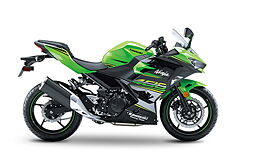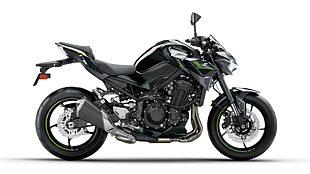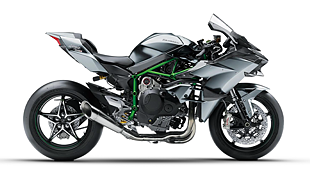Introduction

Pros: Neutral weight distribution, road presence, good brakes
Cons: Expensive, not very comfortable riding position, vibrations at higher revs

Kawasaki had essentially started the entry-level performance segment in India with the Ninja 250 in 2009. While the motorcycle didn’t rack up big sales figures, it did however garner a lot of enthusiasm in the Indian biking fraternity. Over the years, as competition grew, Kawasaki upped the ante by upsizing the baby Ninja with the larger Ninja 300. Now, in order to make the brand more approachable, the company began localisation of their entry-level motorcycle which helped to cut down on costs. This strategy opened doors to introduce a motorcycle in the premium entry-level performance segment, which today we have in the form of the Ninja 400. Available only in the KRT edition, the motorcycle demands a sticker price of Rs 4.69 lakhs, ex-showroom, which is pretty steep. Let’s find out whether the Ninja 400 is worthy enough to make the cut despite its hefty price tag.
Quality

Kawasaki has been known for its use of quality materials and it is instantly understood as soon as you get up close with the motorcycle. The crisp operation of the switchgear, buttons on the instrument cluster and also the fit and finish of the body panel all reek of quality that has been built to last for a long time. The grips feel good to touch and the levers feel nice too, but lose out on adjustment. Lastly, the quality of the paint is top notch which, all in all, gives a good feel once you’re astride upon the motorcycle.
Comfort

The Ninja 400 looks like a SuperSport motorcycle due to its razor sharp front and edgy styling that’s similar to the ZX-10R. But, in reality, it has a sporty yet upright riding stance which is not so committed. Which means, what you get is a sporty yet upright riding position that is not so committed. The seat height is positioned at 785mm which is comfortable for a 5.6 ft tall person like me. The handlebars are easy to reach and the foot-pegs are slightly rear set which is not an issue. The problem, however, is with the seat. Adjusting for the right spot can be a constant task. Sit too close to the tank and the vibrations will leave you numb after an hour of riding. Sit too far back, and the tapering front section of the seat leaves a gap between the bike’s waistline and your thighs preventing you from gripping the tank properly. At the same time, the heat shield covering the exhaust canister remains in contact with the heel which gets annoying after a while.
Performance

As the name suggests, the Ninja 400 features a larger 399cc DOHC parallel-twin motor assisted by a slipper clutch. The motor is capable of churning out 47.5bhp with the power band kicking in after 6000rpm. The engine has more or less a flat torque curve with a strong punch at lower rpm to get quickly off the line. Out on the highway, executing a pass does require a downshift followed by a good twist of the throttle, but given a comfortable window of opportunity, a downshift is not required. The throttle doesn’t snap back at you on abrupt inputs while the motor is comfortable at doing 40 kph in the fifth cog. Speaking of cogs, the 6-speed gearbox in the Ninja 400 is buttery smooth, with positive shifts with each tap of the pedal.

Moving to the riding bits, the Ninja 400 gets a rigid yet light trellis frame, sharper steering angle and a shorter wheelbase (compared to the Ninja 300) offering good slow speed manoeuvrability while taking U-turns or changing lanes. Out on the highway, the Ninja 400 is happy to cruise between the 100-120kph range without any stress. Around corners, the bike feels more at home with long-sweeping ones over sharp bends as you’d want to shed speed before entering the latter. The brakes have a strong bite and offer good progression. The dual-channel ABS doesn’t intervene instantly, thus giving the rider more control over braking. The Ninja 400 comes shod with Dunlop Sportmax tyres which offer good grip once they’ve warmed up.

The Ninja 400 runs a rather limited suspension setup — 41mm non-adjustable telescopic forks up front and a bottom link-type monoshock with preload adjustment for the rear. The setup is on the stiffer side, but not bone-jarring to make it uncomfortable. Over bump and minor potholes, the front doesn’t shake up disturbing the balance of the motorcycle while the rear tends to jump which seems to be the trade-off over fast-flowing cornering abilities.
Technology

The Ninja 400 is decently equipped with some modern tech. It gets a negative LED display with an analogue tachometer unit. The data is easy to read even in harsh sunlight. Other than normal ride data, the console also shows engine temperature, fuel consumption and range. It also sports twin-LED headlamps with decent illumination. The high beam casts a straight beam which creates a gap between the low beam spread on the highway at night, which means riding the Ninja 400 at speed in the night can be a risky affair. Next is the slipper clutch, which as per Kawasaki reduces the force needed by roughly 20 per cent, thus helping in stop-and-go traffic. Speaking of traffic, the heat dissipation of the radiator fan has been cleverly directed to the bottom side of the motorcycle keeping the rider’s knees and legs away from the heat.
Fuel Efficiency

The Ninja 400 returned a mileage of 26.1kmpl after being ridden on our test route, which is decent for a 399cc motorcycle. With a 14-litre tank, the Ninja 400 will return a range of 365km before heading to the fuel station.
Fitness of purpose

The Ninja 400 is a sportsbike and it does its job well. It has a motor that can cruise at triple digits, a sporty yet upright riding posture, and a suspension setup that offers a good balance between comfort and stiffness. To top off, it also has the looks to stand out in a crowd and the grunt that can be enjoyed for years to come.
Our take

The Ninja 400 doesn’t leave a lot to be desired. It is comfortable, it is fast, it is good looking, and its well-engineered. But, even then, the Rs 4.69 lakhs (ex-showroom, Delhi) price tag is very difficult to justify. If Kawasaki can carry-out more localisation with the Ninja 400 and bring the price down by close to a lakh, then and only then, this motorcycle would make the cut.
Photography by Kaustubh Gandhi
Gallery
1/38
Kawasaki Ninja 400 Action
Double Tap to Zoom
















































